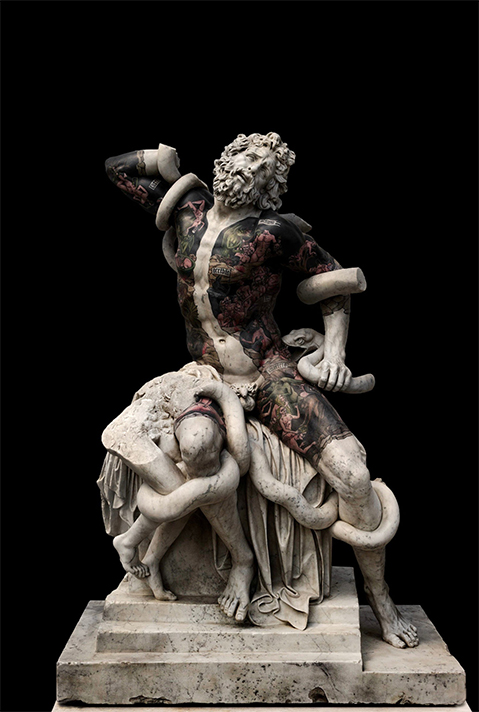
Fabio Viale’s “Laocoon”
Image courtesy of: This Is Colossal
The Italian sculptor Fabio Viale is known for more than his marble representations of antique sculptures. His gigantic sculptures are typically representative of “heavy scenes” from old stories. Viale says that he likes to merge art history with present-day symbols. The artist generally reproduces familiar classical works rather than creating his own pieces. He says this allows him to understand the original artist while adding his own personal sentiments.
The artist told DesignBoom, “It is a meeting between life and death, between the sacred and the profane. A combination, the relationships between these two sets, results in a solid bond that creates energy: The preconception we have of classical beauty and the hardness inherent in a certain type of criminal tattoo provoke gasp and wonder.”
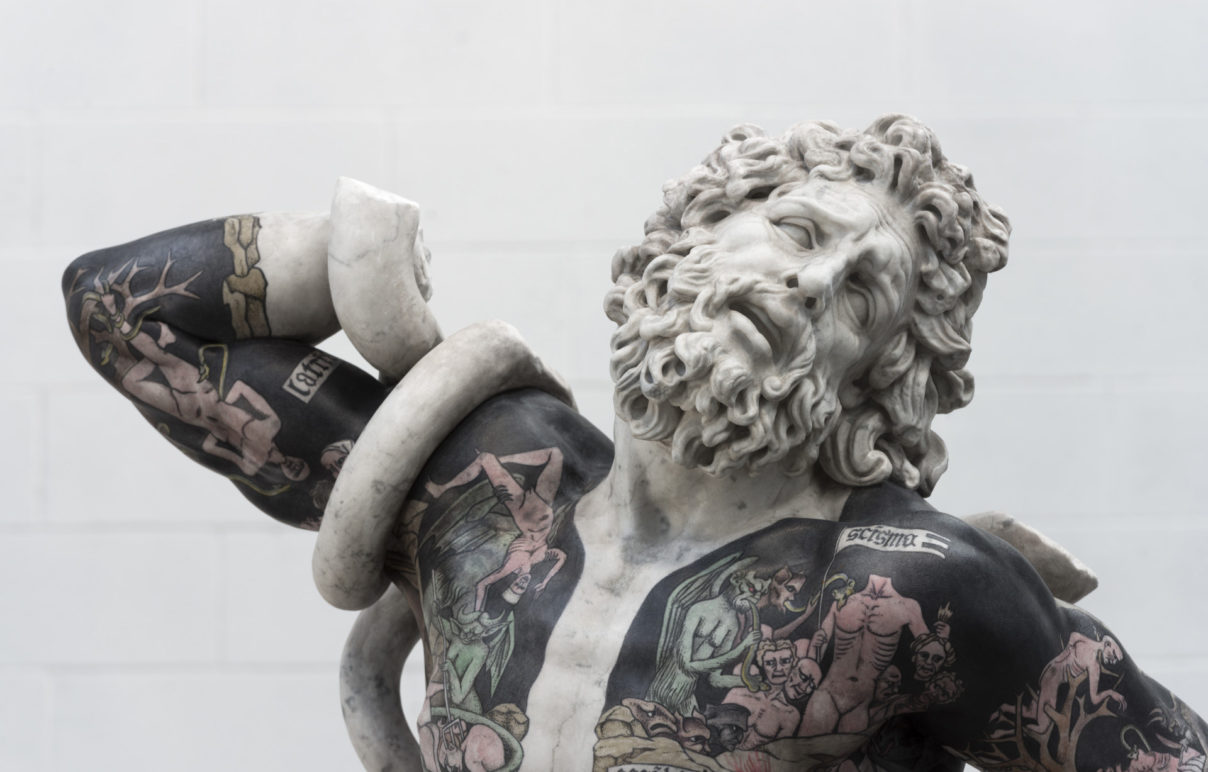
Another angle of “Laocoon.”
Each composition has a blackened backdrop that usually covers the entire area.
Image courtesy of: This Is Colossal
Coining the term, “criminal tattooing,” Viale says that he doesn’t paint the marble… rather, he inscribes a piece of the body as though he is actually imprinting a tattoo onto an arm or a leg. In order to ensure that the ink will last for the long haul, the artist worked with chemists to come up with the perfect blend of ink.
For example, the original Roman sculpture Laocoon includes a boy on the sculpture’s right side; Viale’s sculpture is missing that piece. The main figure is covered from mid-thigh up to the neck and down to the forearms with dark tattoos that include the Seven Deadly Sins from “The Inferno,” the iconic piece painted by Giovanni da Modena in the 15th-century.
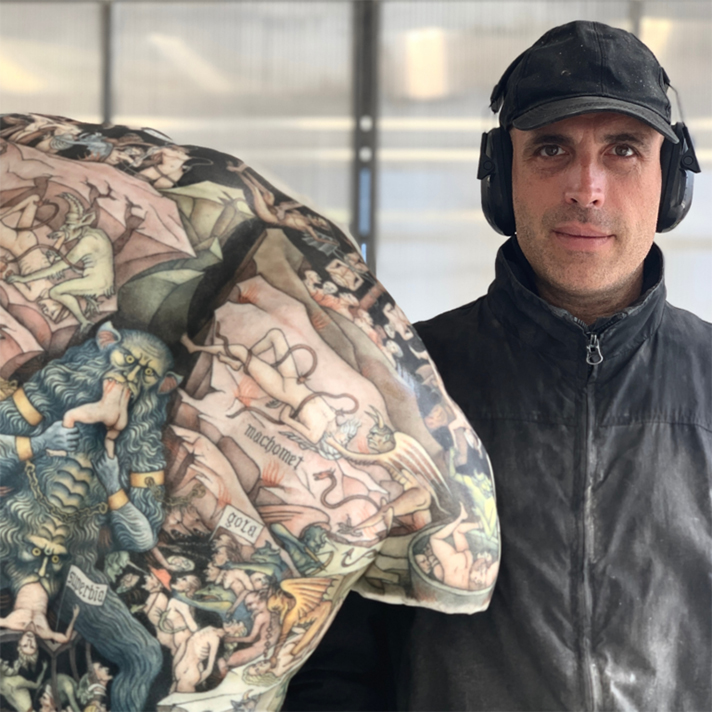
Viale with one of his tattooed busts.
Image courtesy of: Museum Week Magazine
Viale’s subjects are filled with his personal language… beautiful on one hand and dangerous on the other. Rather than coloring the surface, the ink elegantly infiltrates the marble which is similar to how a tattoo’s ink penetrates human skin- permanently.
Getting to this point did not happen immediately. In high school, Viale’s art professor encouraged him to experiment with clay. As soon as he employed a hammer and chisel he saw a gleaming white shard emerging from the marble. At that moment, he decided to become a sculptor; and needless to say, he was hooked!
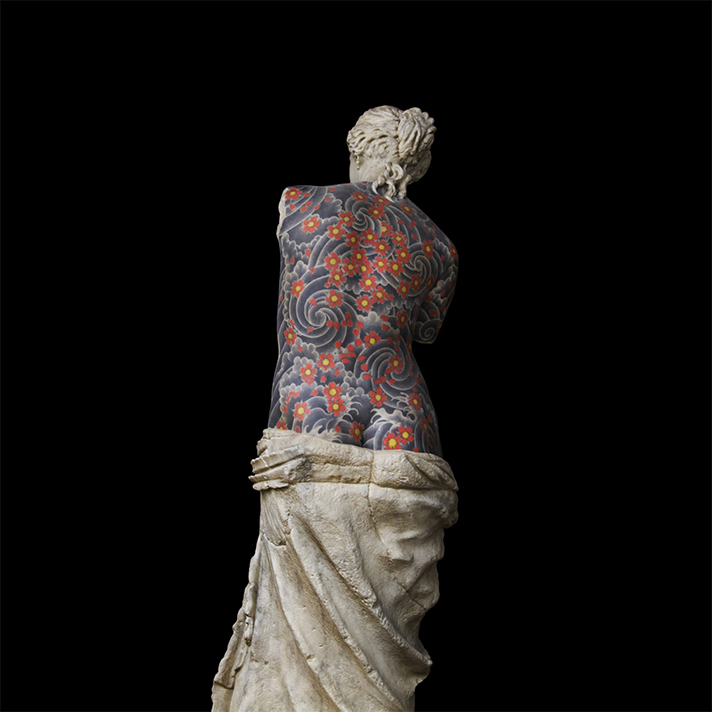
A tattooed Venus of Canova
Image courtesy of: This Is Colossal
One of Viale’s most fascinating collections involves a dialogue between classic iconography and Russia. The sculptures in this collection are covered with tattoos that Russian prisoners often have. These unique icons often have unknown meanings; sometimes they are codes.
Yeas ago, Viale met a Russian tattoo artist who had several strange symbols on his hands. Listening to his explanation and inquisitive in nature, the artist immediately realized that this was something he could replicate. He told Bored Panda, “Like all art, creativity is a mystery. I start from an image that I try to make clear in my mind. Then I face it from a technical point of view, I try to understand all the problems, times, costs, etc. Then I drive 300 kilometers to choose the marble.” He continued, “I am interested in symbolic tattoos, I am not attracted to decorative forms. I see in the criminal tattoos a sort of aesthetic ignorance that draws all the viewer’s attention to its contents.”
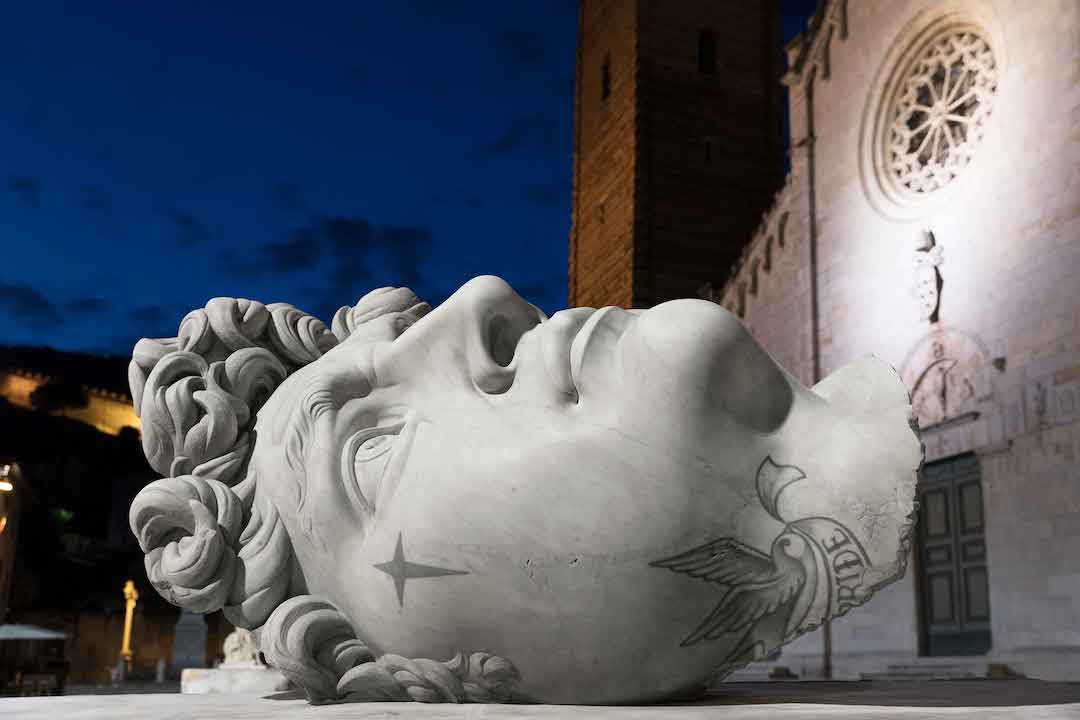
Viale told Emma Taggart (courtesy of My Modern Met), “I like the kind of tattoos that deal with death and life and use ancient symbology.”
Image courtesy of: My Modern Met
A part of Viale’s recent “Truly Exhibition” was a display of several of his sculptures around Piazza del Duomo in Tuscany’s Pietrasanta. Curated by Enrico Mattei, the artist says that he hopes his sculptures provoke questions that are personal and point to religious freedom. The mix of old and new never grows old… this is a new iteration for a curious world.